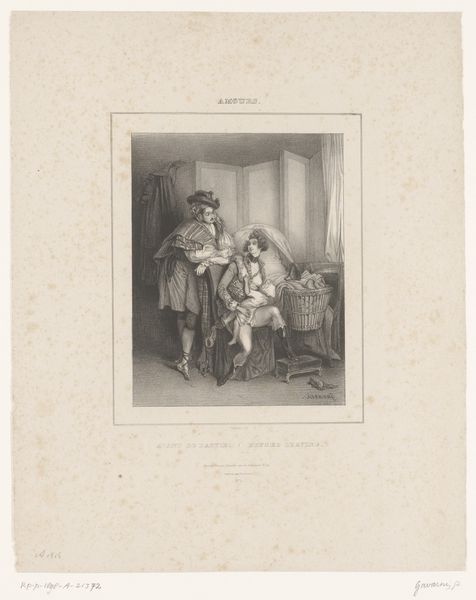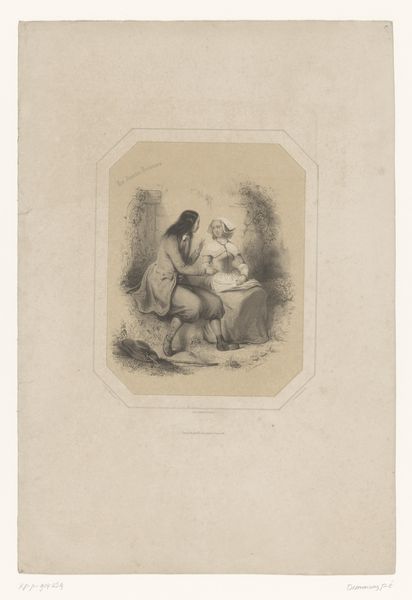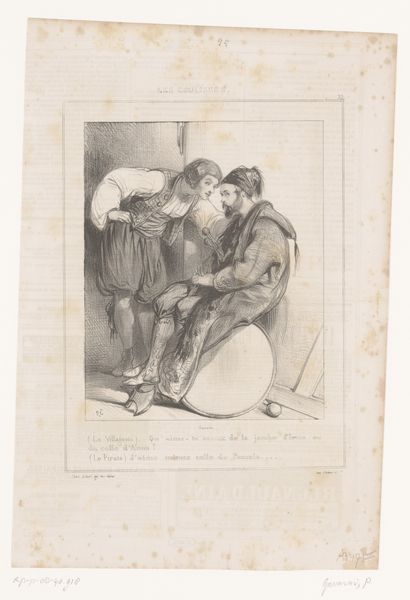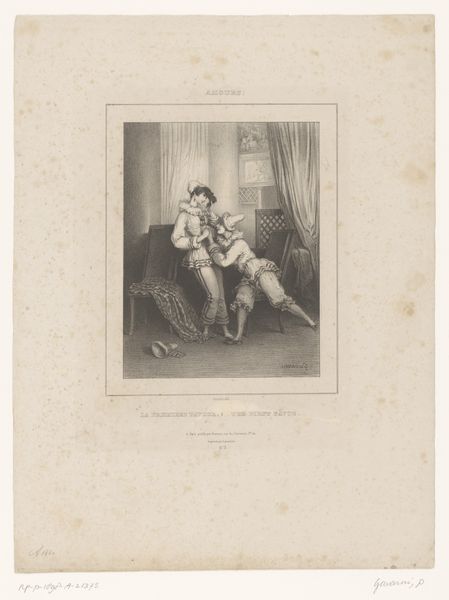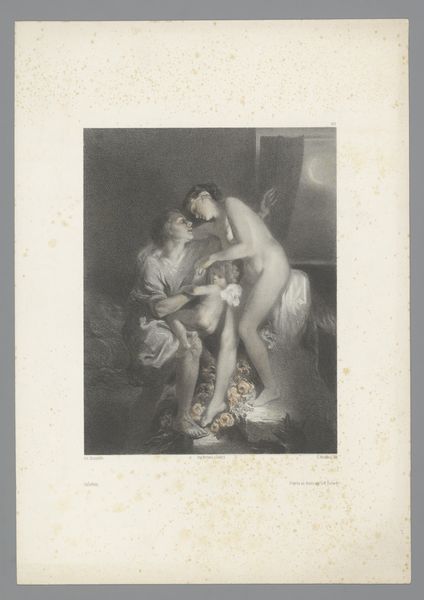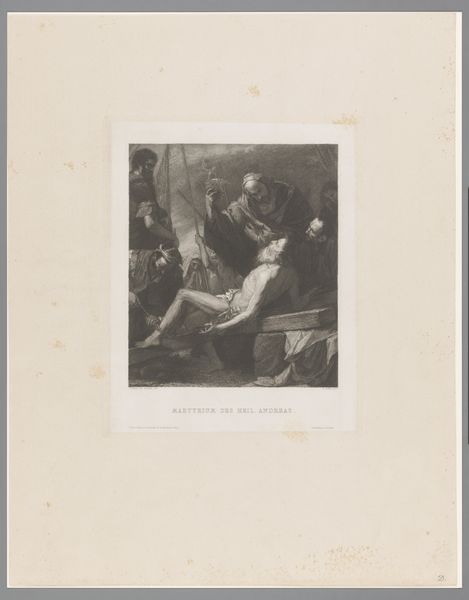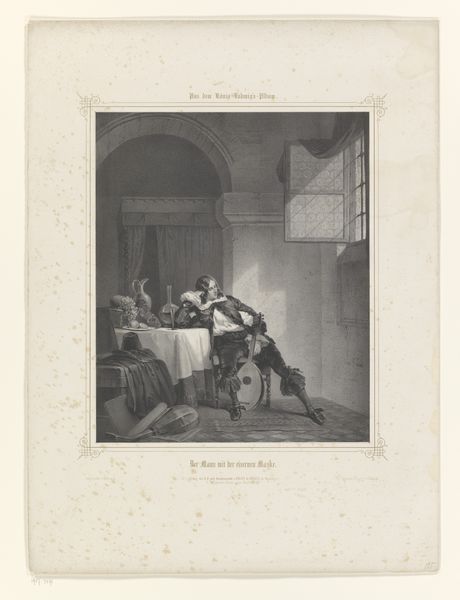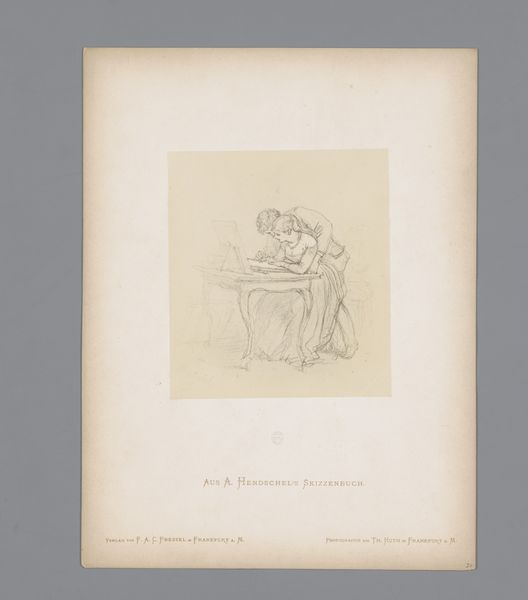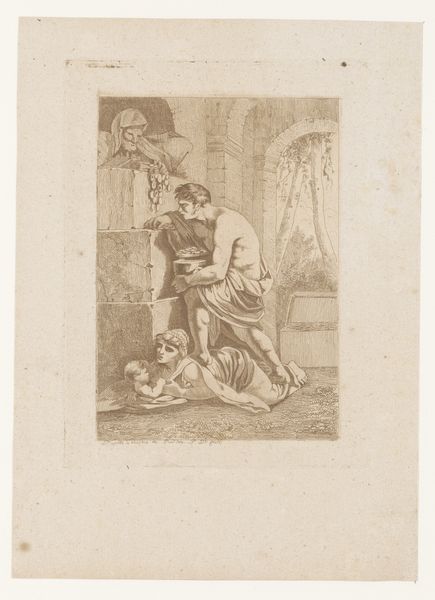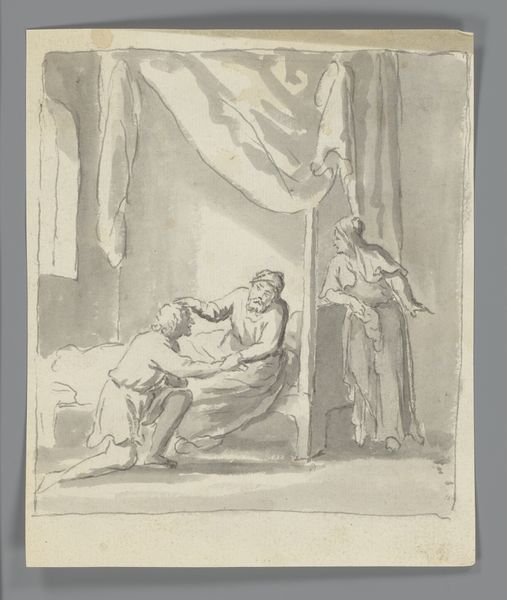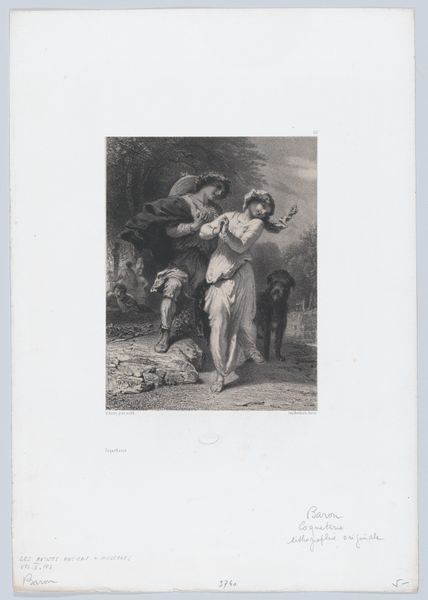
print, engraving
#
neoclacissism
#
allegory
# print
#
figuration
#
romanticism
#
genre-painting
#
academic-art
#
engraving
Dimensions: height 546 mm, width 362 mm
Copyright: Rijks Museum: Open Domain
Curator: Here we have “Studie gestoord door de liefde,” or "Study Disturbed by Love," an engraving by Joseph Louis Leborne, dating back to 1823. Editor: My first thought is how unsettlingly polished everything is. Look at those sharp lines, the perfectly rendered textures, and the staged sentiment! I mean, it is about the moment when rational study meets love. Curator: It certainly fits within the Neoclassical style. See how the artist uses allegorical figures and classical forms to explore universal themes—in this instance, the distraction of love. He draws on romanticism too to express emotion and subjective experience. The artist highlights a return to order, a time when industry could have allowed workers dignity, while the old hierarchies had their death throes. The surface appeal of all the goods had an allure... Editor: Absolutely. This print screams "art as a commodity." Look at the crisp lines—obviously machine-made, facilitating mass production. An engraving isn't just a pretty picture; it’s a reproductive medium, making art accessible (in theory) to a broader audience. The theme of disruption is even echoed in production and labor... This cupid literally messes up somebody's work. What's this woman making? Curator: From the Globe, tools, and books on the table in front of her, it looks like our muse has turned into an early scientist. I love how cupid leans in with the smoke curling around the lamp behind the subject’s head—as if that’s a metaphor for passion fogging clear reason and calculated industry. He breaks into a sterile space. Editor: And how loaded are the material choices? The stark contrast suggests refinement—paper, ink, the machinery involved. It speaks to a society obsessed with progress, productivity, and control. But doesn't that hyper-clean aesthetic ultimately flatten emotional depth? Like the artist focuses too much on craft. It loses something about how it *feels* to be disrupted. Curator: Maybe, or maybe Leborne cleverly captures the inherent tension. Academic art often grapples with binaries: reason vs. emotion, control vs. chaos. I think it shows he recognized what happens at those conflict zones. The allegory works! Editor: Fair enough. I can appreciate how the material reality—the mass-produced engraving—challenges traditional notions of authorship and artistic genius. It speaks to art’s evolving role in an increasingly industrialized world. Curator: Ultimately, this print is a small object about an entire era transitioning, and of course, all kinds of timeless dilemmas in a frame. It’s pretty powerful, isn’t it? Editor: It is, especially now that I can look past the polished surface and notice how much that same industrial labor affected its deeper purpose.
Comments
No comments
Be the first to comment and join the conversation on the ultimate creative platform.
